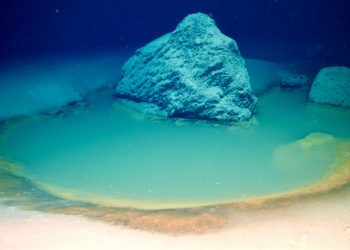Scientists are pioneering a new approach to detecting extraterrestrial life by leveraging chemotaxis—a natural phenomenon where organisms move toward specific chemicals. This breakthrough could significantly enhance the search for microbial life on Mars and beyond.
A New Strategy for Finding Life on Other Worlds
The search for life beyond Earth has long focused on detecting biosignatures—chemical traces of biological activity. However, a German research team has introduced a potentially game-changing method: rather than simply looking for traces of life, why not trigger living organisms to reveal themselves?
Led by Max Riekeles of the Technical University of Berlin, the team developed a novel approach using L-serine, an amino acid known to stimulate movement in microorganisms. If extraterrestrial microbes exist on Mars, this method could make them more detectable.
“Our astrobiology research group is highly interdisciplinary, comprising biologists, aerospace engineers, medical engineers, chemists, geologists, and physicists,” Riekeles explained. “We often hold collaborative discussions to bring together diverse perspectives and brainstorm innovative solutions.”
Why L-Serine Could Be Key to Detecting Martian Microbes
L-serine is not just another amino acid—it has cosmic significance. Scientists have detected it in meteorites and on the asteroid Ryugu, suggesting that it has existed since before the formation of the Solar System. Since both Earth and Mars were bombarded by carbon-rich asteroids in their early history, it’s reasonable to assume L-serine is present on Mars as well.
“If life developed on Mars with a similar biochemistry to known life on Earth, it seems plausible that L-serine could also be a potent chemoattractant for hypothetical Martian microbes,” Riekes continued. “Additionally, the environmental conditions of early Mars, which were warmer and likely supported liquid water, resemble those of early Earth, making a similar biochemistry of putative Martian microbes plausible.”
To test this hypothesis, the researchers studied extremophiles—microbes that thrive in extreme environments similar to those found on Mars. They selected three species:
- Bacillus subtilis spores, capable of surviving extreme heat up to 100°C.
- Pseudoalteromonas haloplanktis, found in Antarctica and adapted to temperatures as low as -2.5°C.
- Haloferax volcanii, an archaeon that thrives in highly saline conditions, resembling environments that could exist on Mars.
Each of these microorganisms responded to L-serine by actively moving toward it, confirming its effectiveness in stimulating microbial motion.
A Simple, Space-Ready Life Detection Device
The team designed a minimalist, easy-to-use detection system that could be adapted for planetary missions. Their device consists of two chambers—one containing a microbial sample and the other filled with L-serine—separated by a thin membrane. If microbes are present and motile, they will swim toward the amino acid, providing a clear signal of life.
However, refining this device for real-world deployment poses additional challenges. Space missions require ultra-compact, resilient, and automated equipment. The researchers are now working to make their apparatus smaller, sturdier, and capable of functioning autonomously in space.
Beyond Mars: Expanding the Search for Life
While Mars remains the primary target, this technology could be used on other celestial bodies suspected to harbor life. Europa, one of Jupiter’s moons, has a subsurface ocean beneath its icy crust, making it an ideal candidate for this type of microbial detection.
The Berlin-based team is also exploring applications beyond space exploration. Similar technology could be adapted for water quality testing on Earth, offering new ways to detect microbial contamination in drinking water and environmental monitoring.
“We are continuing to develop the device to improve its Technology Readiness Level,” Riekeles said. “Our focus is on making it smaller, more robust, and fully automated to meet the requirements of space exploration. While we are driving the development process internally, we plan to collaborate with third parties, like space agencies, to ensure it becomes flight-ready.”











